Abstract
The hemodynamic determinants of the time-course of fall in isovolumic left ventricular pressure were assessed in isolated canine left ventricular preparations. Pressure fall was studied in isovolumic beats or during prolonged isovolumic diastole after ejection. Pressure fall was studied in isovolumic relaxation for isovolumic and ejecting beats (r less than or equal to 0.98) and was therefore characterized by a time constant, T. Higher heart rates shortened T slightly from 52.6 +/- 4.5 ms at 110/min to 48.2 +/- 6.0 ms at 160/min (P less than 0.01, n = 8). Higher ventricular volumes under isovolumic conditions resulted in higher peak left ventricular pressure but no significant change in T. T did shorten from 67.1 +/- 5.0 ms in isovolumic beats to 45.8 +/- 2.9 ms in the ejecting beats (P less than 0.001, n = 14). In the ejecting beats, peak systolic pressure was lower, and end-systolic volume smaller. To differentiate the effects of systolic shortening during ejection from those of lower systolic pressure and smaller end-systolic volume, beats with large end-diastolic volumes were compared to beats with smaller end-diastolic volumes. The beats with smaller end-diastolic volumes exhibited less shortening but similar end-systolic volumes and peak systolic pressure. T again shortened to a greater extent in the beats with greater systolic shortening. Calcium chloride and acetylstrophanthidin resulted in no significant change in T, but norepinephrine, which accelerates active relaxation, resulted in a significant shortening of T (65.6 +/- 13.4 vs. 46.3 +/- 7.0 ms, P less than 0.02). During recovery from ischemia, T increased significantly from 59.3 +/- 9.6 to 76.8 +/- 13.1 ms when compared with the preischemic control beat (P less than 0.05). Thus, the present studies show that the time-course of isovolumic pressure fall subsequent to maximum negative dP/dt is exponential, independent of systolic stress and end-systolic fiber length, and minimally dependent on heart rate. T may be an index of the activity of the active cardiac relaxing system and appears dependent on systolic fiber shortening.
Full text
PDF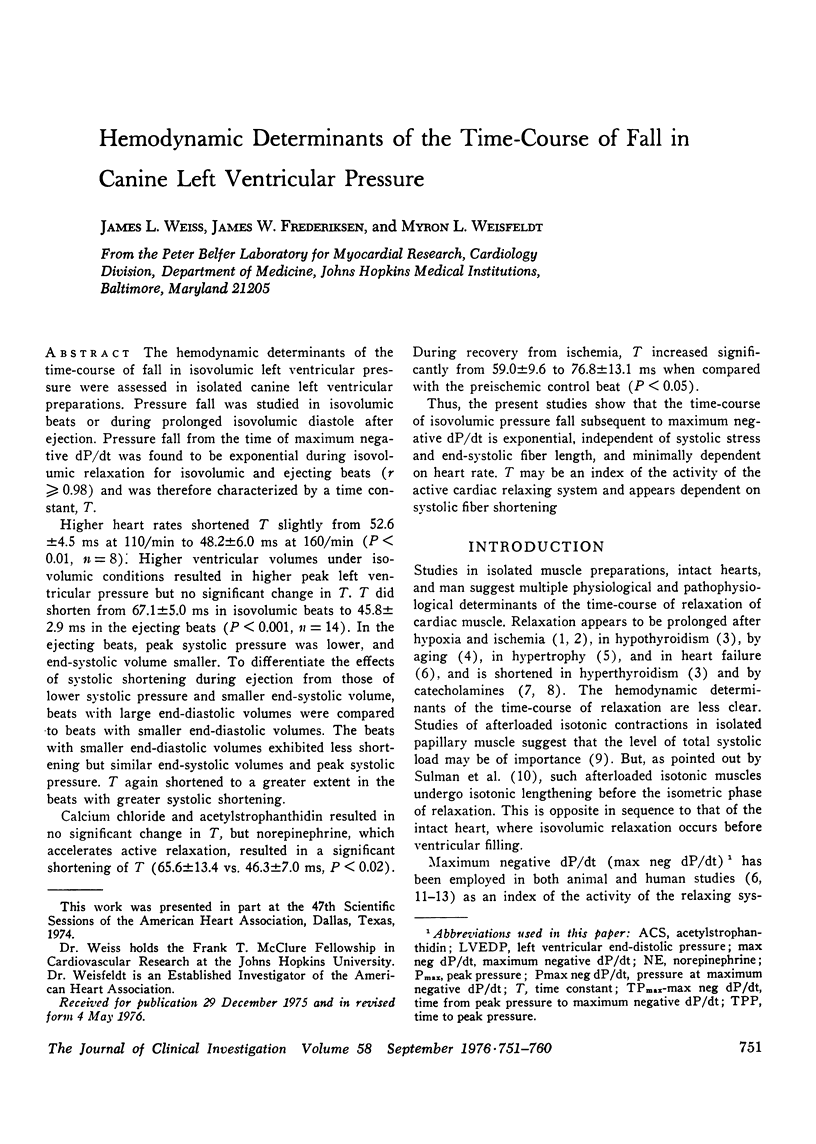
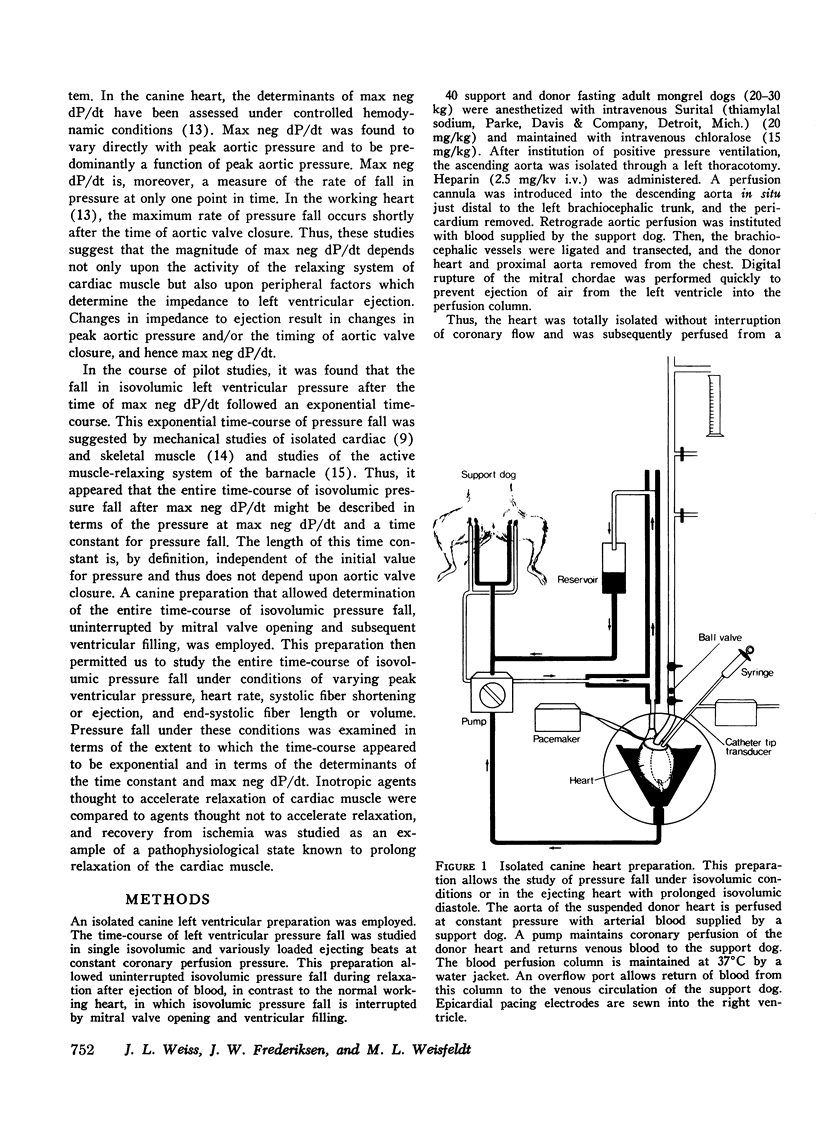
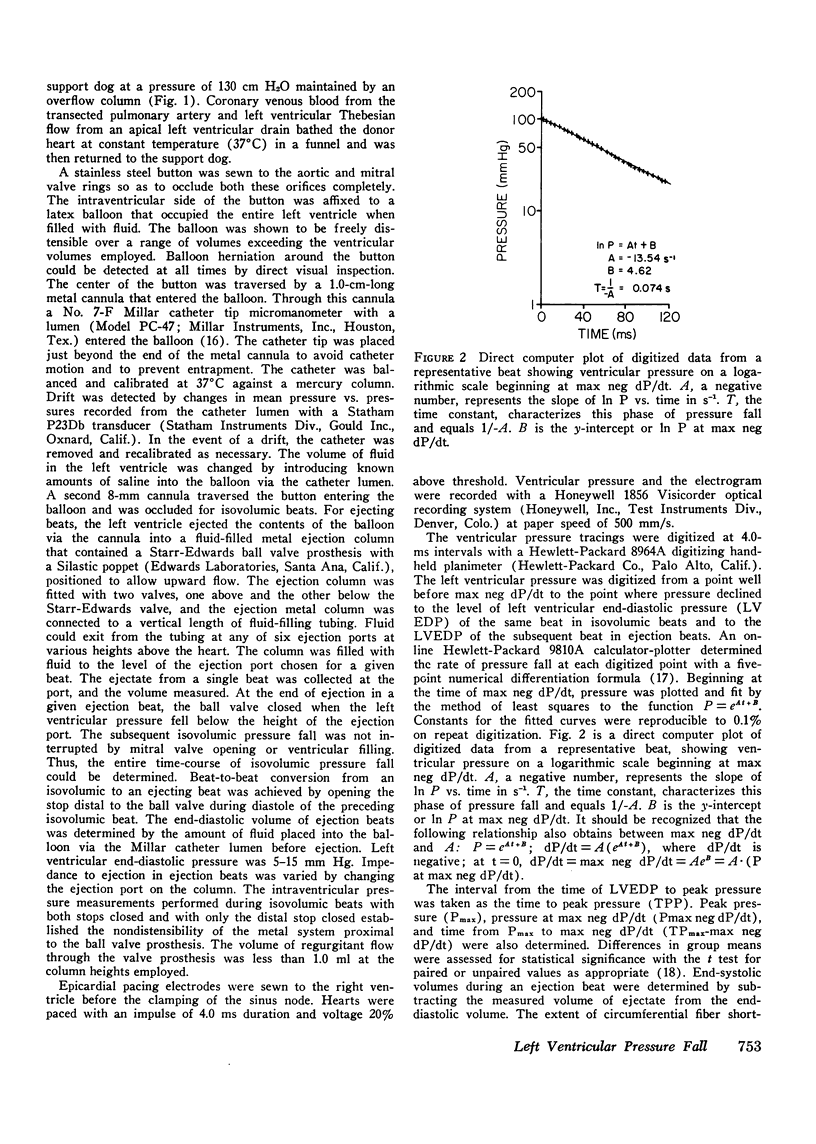
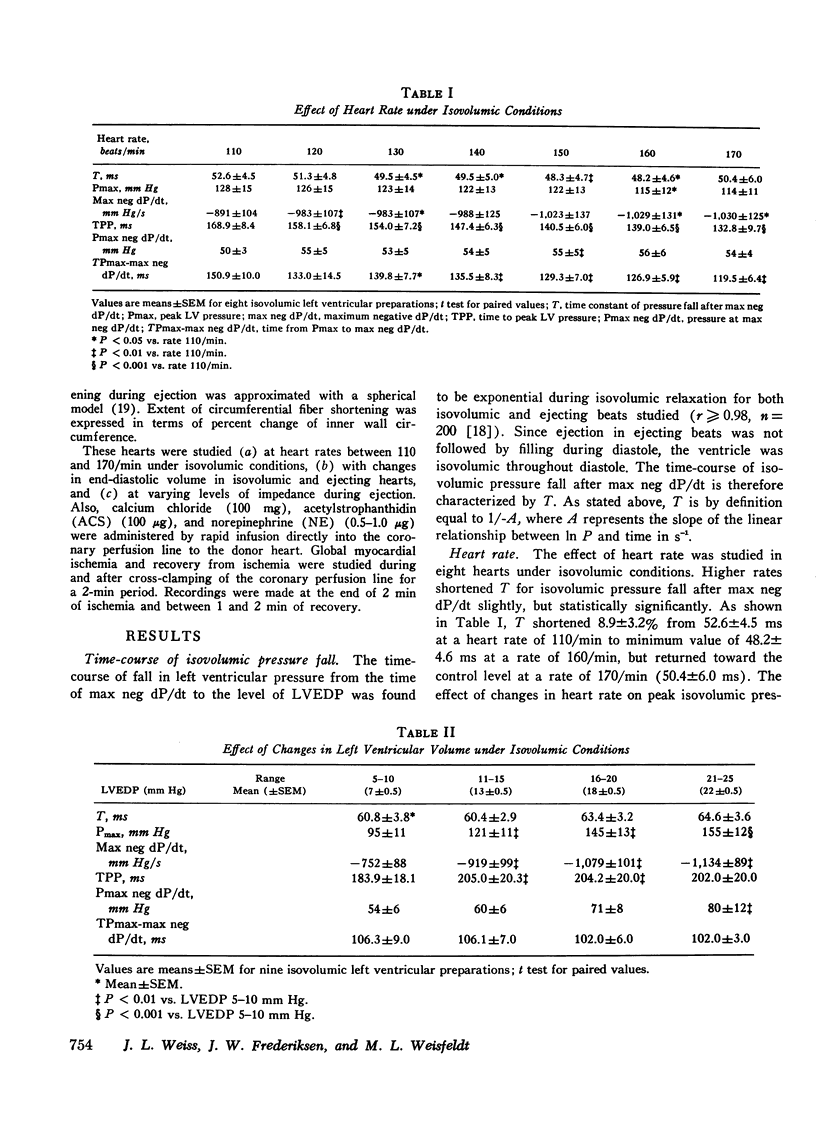
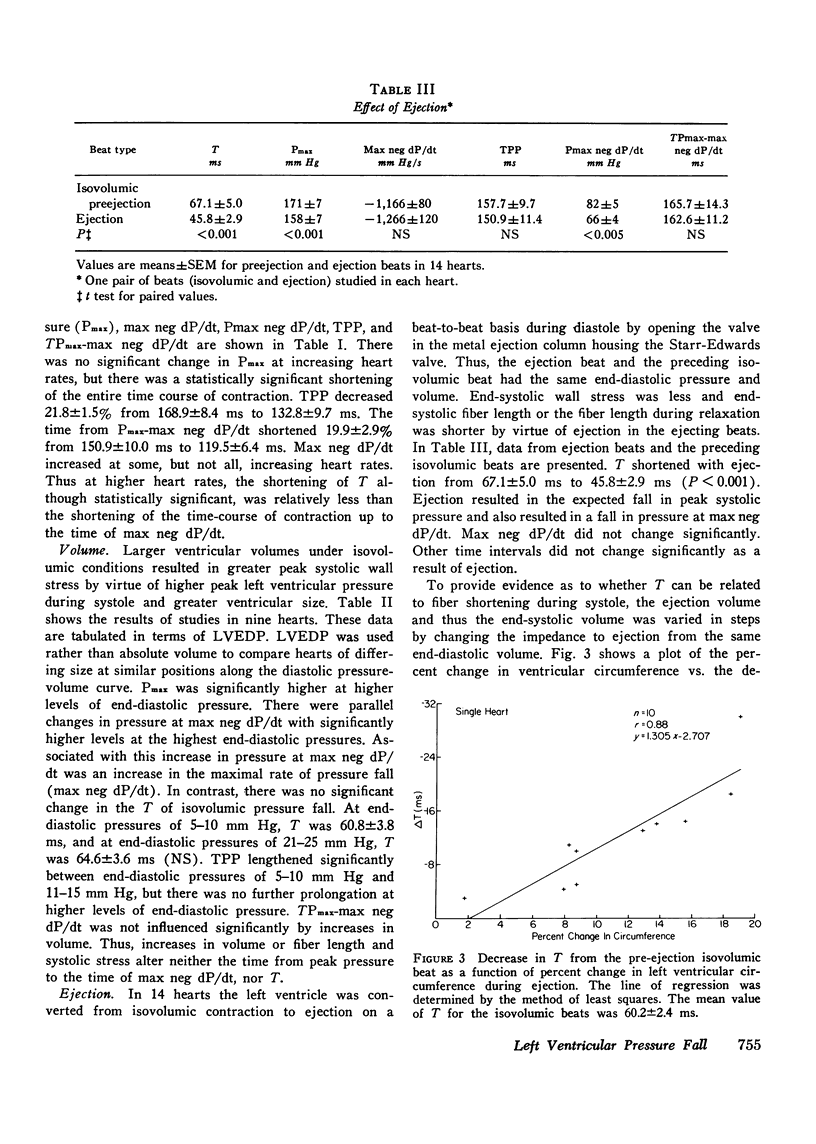
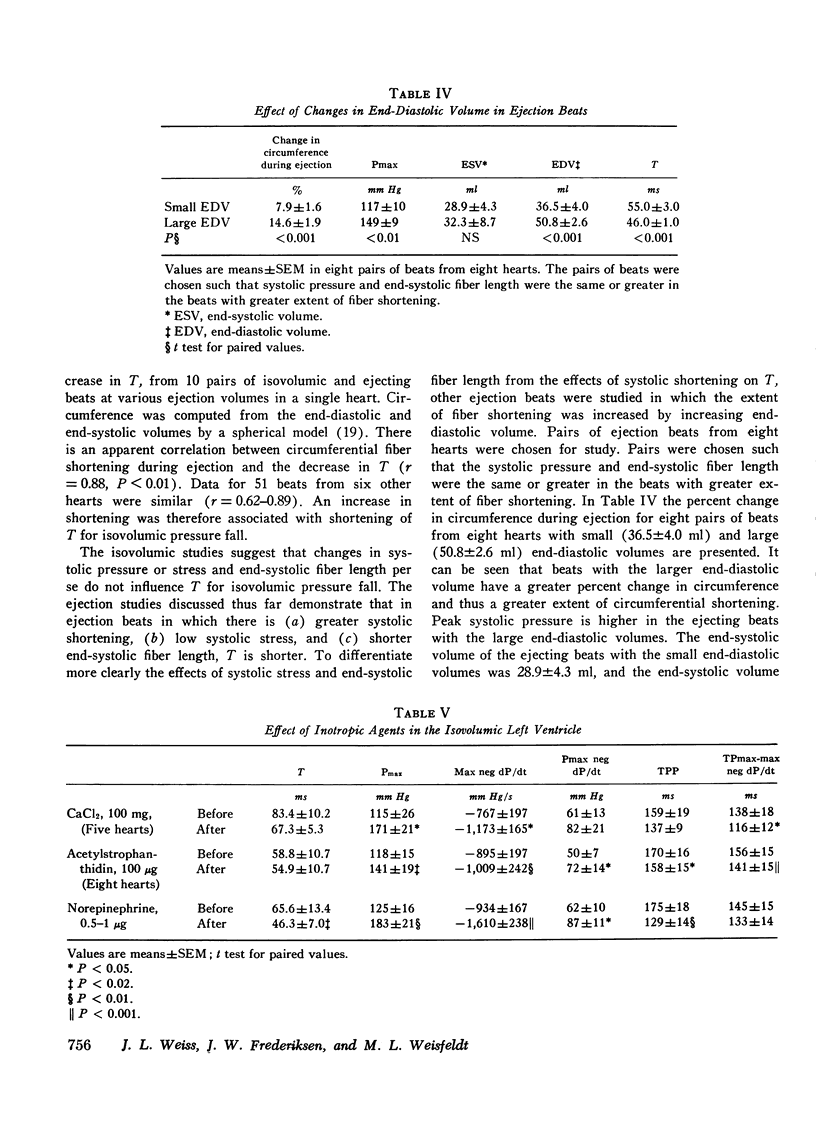
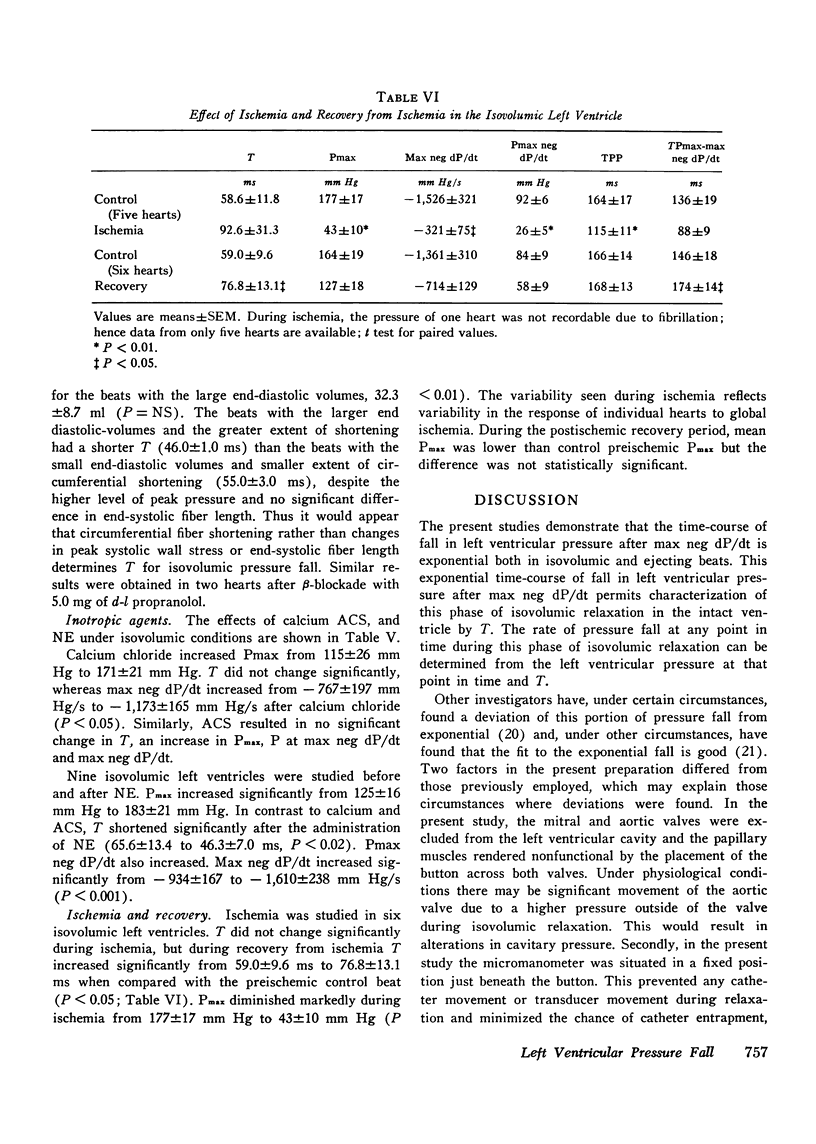
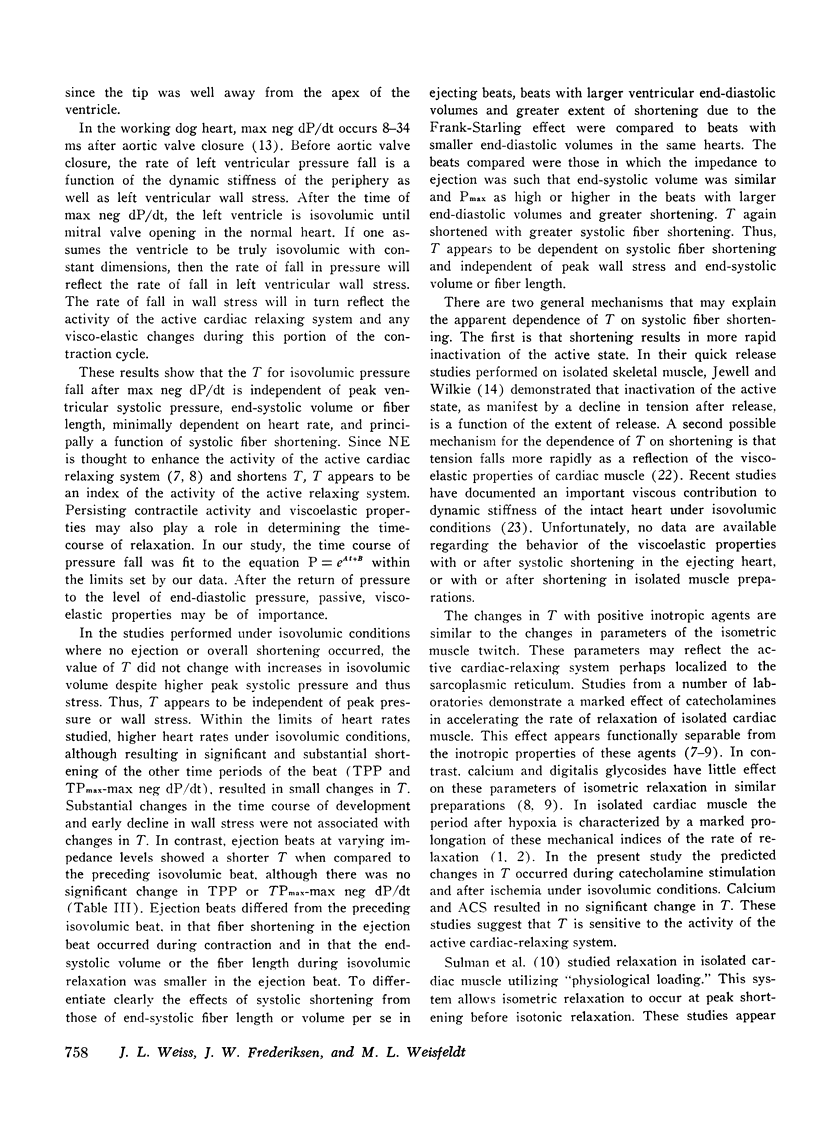
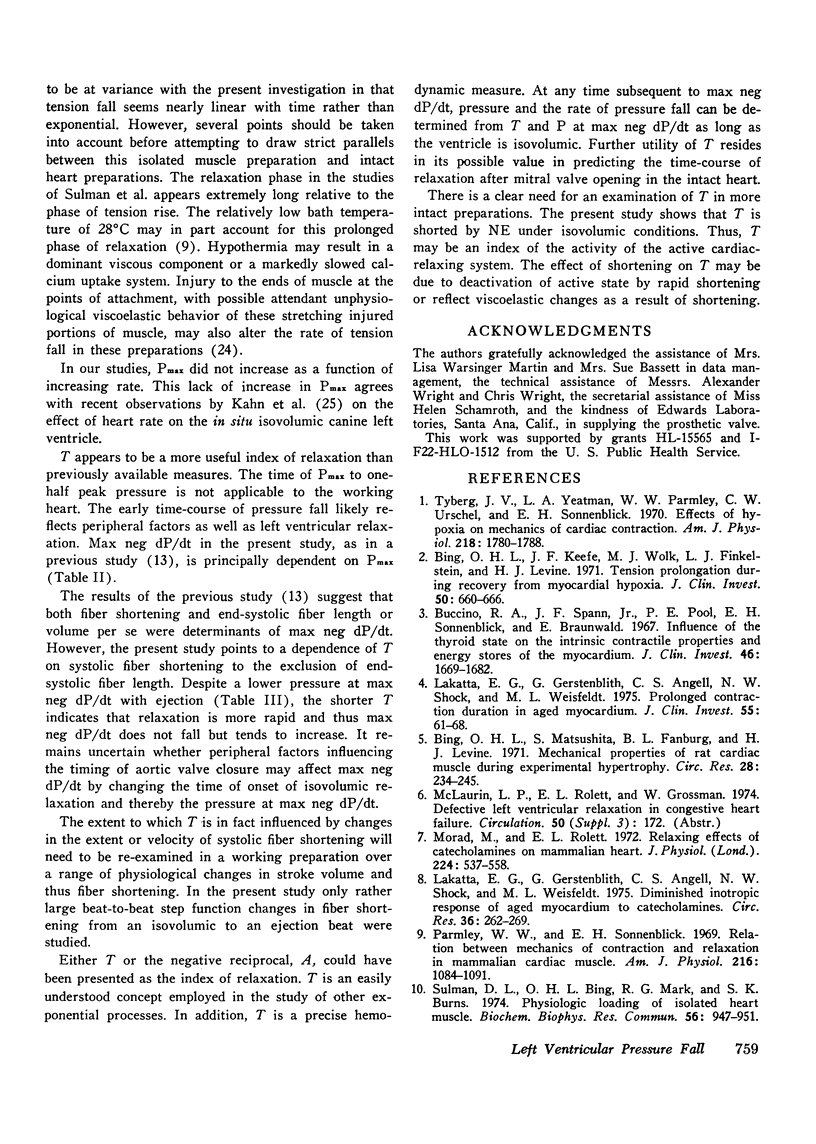
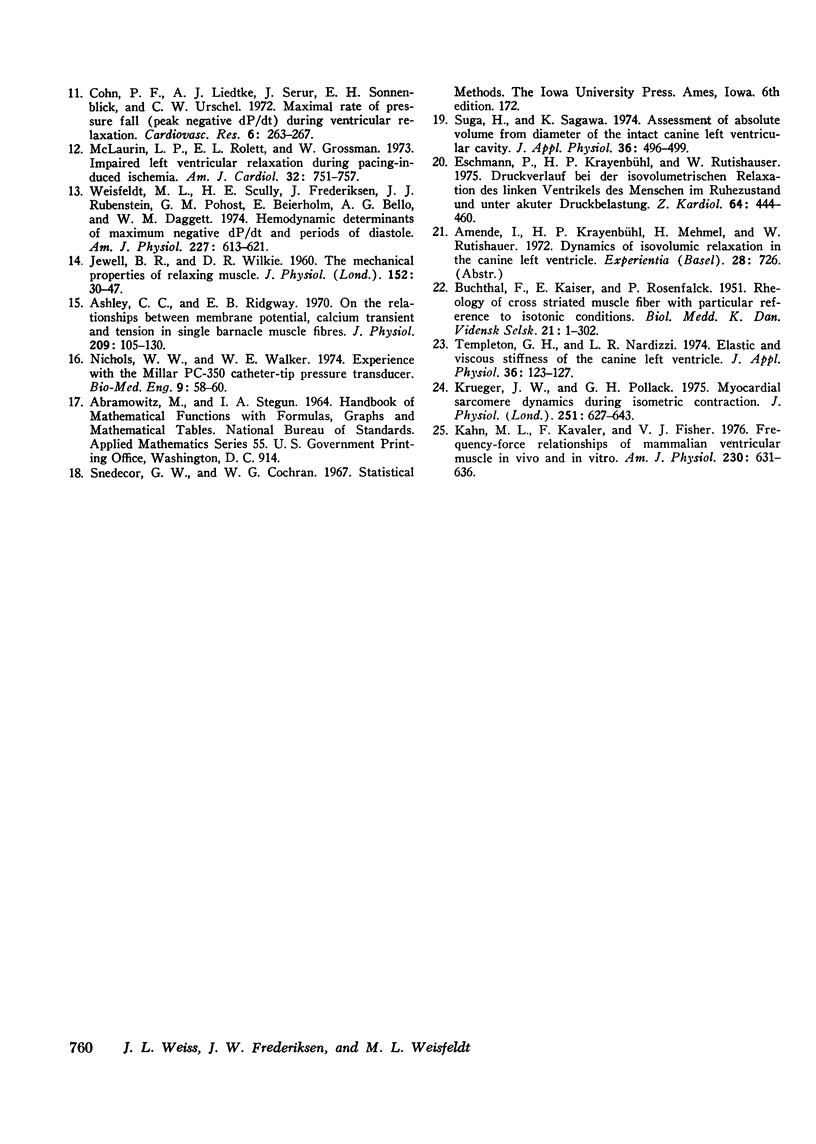
Selected References
These references are in PubMed. This may not be the complete list of references from this article.
- Ashley C. C., Ridgway E. B. On the relationships between membrane potential, calcium transient and tension in single barnacle muscle fibres. J Physiol. 1970 Jul;209(1):105–130. doi: 10.1113/jphysiol.1970.sp009158. [DOI] [PMC free article] [PubMed] [Google Scholar]
- Bing O. H., Keefe J. F., Wolk M. J., Finkelstein L. J., Levine H. J. Tension prolongation during recovery from myocardial hypoxia. J Clin Invest. 1971 Mar;50(3):660–666. doi: 10.1172/JCI106536. [DOI] [PMC free article] [PubMed] [Google Scholar]
- Bing O. H., Matsushita S., Fanburg B. L., Levine H. J. Mechanical properties of rat cardiac muscle during experimental hypertrophy. Circ Res. 1971 Feb;28(2):234–245. doi: 10.1161/01.res.28.2.234. [DOI] [PubMed] [Google Scholar]
- Buccino R. A., Spann J. F., Jr, Pool P. E., Sonnenblick E. H., Braunwald E. Influence of the thyroid state on the intrinsic contractile properties and energy stores of the myocardium. J Clin Invest. 1967 Oct;46(10):1669–1682. doi: 10.1172/JCI105658. [DOI] [PMC free article] [PubMed] [Google Scholar]
- Cohn P. F., Liedtke A. J., Serur J., Sonnenblick E. H., Urschel C. W. Maximal rate of pressure fall (peak negative dP-dt) during ventricular relaxation. Cardiovasc Res. 1972 May;6(3):263–267. doi: 10.1093/cvr/6.3.263. [DOI] [PubMed] [Google Scholar]
- Eschmann P., Krayenbühl H. P., Rutishauser W. Druckverlauf bei der isovolumetrischen Relaxation des linken Ventrikels des Menschen im Ruhezustand und unter akuter Druckbelastung. Z Kardiol. 1975 May;64(5):444–460. [PubMed] [Google Scholar]
- JEWELL B. R., WILKIE D. R. The mechanical properties of relaxing muscle. J Physiol. 1960 Jun;152:30–47. doi: 10.1113/jphysiol.1960.sp006467. [DOI] [PMC free article] [PubMed] [Google Scholar]
- Kahn M. L., Kavaler F., Fisher V. J. Frequency-force relationships of mammalian ventricular muscle in vivo and in vitro. Am J Physiol. 1976 Mar;230(3):631–636. doi: 10.1152/ajplegacy.1976.230.3.631. [DOI] [PubMed] [Google Scholar]
- Krueger J. W., Pollack G. H. Myocardial sarcomere dynamics during isometric contraction. J Physiol. 1975 Oct;251(3):627–643. doi: 10.1113/jphysiol.1975.sp011112. [DOI] [PMC free article] [PubMed] [Google Scholar]
- Lakatta E. G., Gerstenblith G., Angell C. S., Shock N. W., Weisfeldt M. L. Diminished inotropic response of aged myocardium to catecholamines. Circ Res. 1975 Feb;36(2):262–269. doi: 10.1161/01.res.36.2.262. [DOI] [PubMed] [Google Scholar]
- Lakatta E. G., Gerstenblith G., Angell C. S., Shock N. W., Weisfeldt M. L. Prolonged contraction duration in aged myocardium. J Clin Invest. 1975 Jan;55(1):61–68. doi: 10.1172/JCI107918. [DOI] [PMC free article] [PubMed] [Google Scholar]
- McLaurin L. P., Rolett E. L., Grossman W. Impaired left ventricular relaxation during pacing-induced ischemia. Am J Cardiol. 1973 Nov;32(6):751–757. doi: 10.1016/s0002-9149(73)80002-5. [DOI] [PubMed] [Google Scholar]
- Morad M., Rolett E. L. Relaxing effects of catecholamines on mammalian heart. J Physiol. 1972 Aug;224(3):537–558. doi: 10.1113/jphysiol.1972.sp009912. [DOI] [PMC free article] [PubMed] [Google Scholar]
- Nichols W. W., Walker W. E. Experience with the Millar PC-350 catheter-tip pressure transducer. Biomed Eng. 1974 Feb;9(2):58–60. [PubMed] [Google Scholar]
- Parmley W. W., Sonnenblick E. H. Relation between mechanics of contraction and relaxation in mammalian cardiac muscle. Am J Physiol. 1969 May;216(5):1084–1091. doi: 10.1152/ajplegacy.1969.216.5.1084. [DOI] [PubMed] [Google Scholar]
- Suga H., Sagawa K. Assessment of absolute volume from diameter of the intact canine left ventricular cavity. J Appl Physiol. 1974 Apr;36(4):496–499. doi: 10.1152/jappl.1974.36.4.496. [DOI] [PubMed] [Google Scholar]
- Sulman D. L., Bing O. H., Mark R. G., Burns S. K. Physiologic loading of isolated heart muscle. Biochem Biophys Res Commun. 1974 Feb 27;56(4):947–951. doi: 10.1016/s0006-291x(74)80280-9. [DOI] [PubMed] [Google Scholar]
- Templeton G. H., Nardizzi L. R. Elastic and viscous stiffness of the canine left ventricle. J Appl Physiol. 1974 Jan;36(1):123–127. doi: 10.1152/jappl.1974.36.1.123. [DOI] [PubMed] [Google Scholar]
- Tyberg J. V., Yeatman L. A., Parmley W. W., Urschel C. W., Sonnenblick E. H. Effects of hypoxia on mechanics of cardiac contraction. Am J Physiol. 1970 Jun;218(6):1780–1788. doi: 10.1152/ajplegacy.1970.218.6.1780. [DOI] [PubMed] [Google Scholar]
- Weisfeldt M. L., Scully H. E., Frederiksen J., Rubenstein J. J., Pohost G. M., Beierholm E., Bello A. G., Daggett W. M. Hemodynamic determinants of maximum negative dP-dt and periods of diastole. Am J Physiol. 1974 Sep;227(3):613–621. doi: 10.1152/ajplegacy.1974.227.3.613. [DOI] [PubMed] [Google Scholar]


